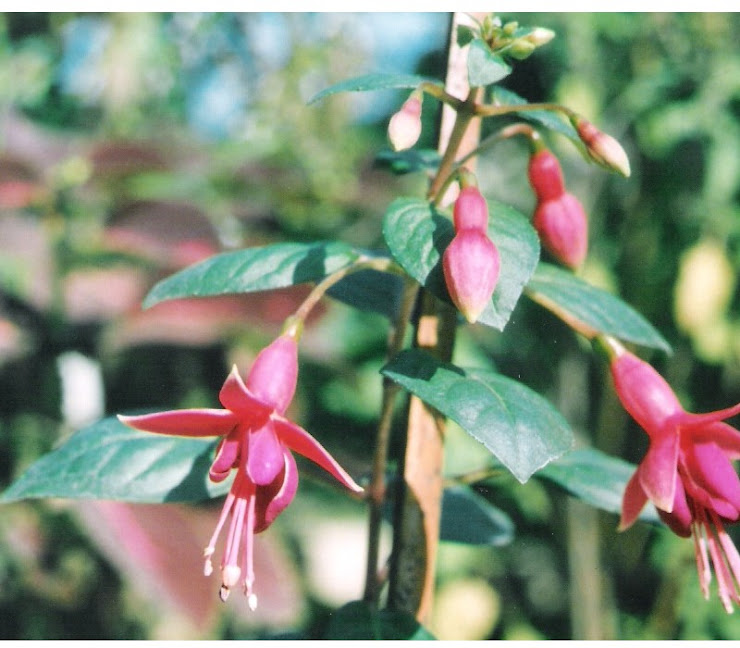YOUR GARDEN – SUMMER CARE
The summer season has set in and with it the problems that every gardener has to cope with.
· HIGH TEMPERATURES
· POOR WATER SUPPLY
· PESTS
A garden can be safely divided in to the following vegetation:
· LAWN
· TREES
· SHRUBS
· FLOWERS –ANNUALS – PERENNIALS – SEASONAL –ROSES –BULBOUS -CACTI –
SUCCCULENTS
· VEGETABLES
BASIC CARE POINTS
WATERING
How much and when – Depends upon the soil type.
· Clay - less water
· Clay-Loam - medium water
· Clay-Sandy - more water
· Sandy - heavy water
Soil condition dictates the frequency for the watering and you have to judge it yourself.
The number of days between each watering is directly proportional to the soil type and the quantity given.
Each time you water, apply enough water to moisten as much of the root zone as possible.
· Clay soils 2-3 Cm
· Clay-Loam 4-5 Cm
· Clay - Sandy 6-7 Cm
· Sandy 10-12 Cm
· The most effective watering time is late evening and early morning (between 10 p.m. and
midnight or 8 and 9 a.m.
2
MULCHING
Perhaps you are not aware about the important role that mulching plays in conserving water and reducing the frequency.
· Mulching is the practice of collection the fallen tree leaves, shreading them and placing
these in the flower beds as well as in the flower pots to cover the roots.
· The mulch retains moisture.
· Discourages growth of weeds.
· Reduces the strength of direct sun rays.
REMOVING THE DEBRIS
Remove all the debris from your garden. You must clear out the old leaves and stems before you plant. This is the single-most effective pest control measure you can take for your garden. Insect eggs or disease spores from last year’s growth can infect your new crop.
LOOESNING THE SOIL
Use a shovel to break up clods of dirt and loosen the soil to the rooting depth of your plants. You want to create a uniform, porous seedbed for seeds and seedlings. Any plants that root below 5 or 6 inches are capable of penetrating most soils. If your garden plot has packed clay or sandy soil, till in organic matter such as peat, composted leaves or lawn clippings and work them into the soil as deeply as you can. This will form a soil structure that allows roots to breathe and grow. It will also help retain vital moisture and nutrients. Do not use lawn clippings for this if you have treated your lawn with a weed killer or insecticide. Residual chemicals on the clippings can damage garden plants or make vegetables unsafe to eat. After all, leaving clippings on the lawn recycles nutrients back to grass plants, improving your lawn’s health and beauty.
FERTILISATION
Use a slow-release nitrogen fertilizer.
It provides plants with small amounts of nutrients over a long period of time.
Slow release nitrogen goes directly to the plants and not into groundwater.
It is friendly to the environment and allows plants to use all the nutrients you apply.
It also promotes even growth, discouraging insect and disease problems.
Slow-release nitrogen fertiliser reduces the risk of damage to plants and the environment in case it is misapplied or overused.
3
IMPROVING THE SOIL
An organic-based nitrogen fertiliser (harmone)is ideal for helping build soil while fertilising. It also reduces stress in plants. Herbo zyme (Excel Industries) is recommended. Besides being an excellent source of plant nutrients it helps the plants to guard against heat as well as water stress.
PESTS
With summers in the Pests are not far. The summer heat goes a long way in the hatching process of the dormant eggs of the various insects. The humid conditions prevailing in the Doon valley act as a catalyst and encourages pest infestation. The use of chemical insecticide should be discouraged and the practice of IPM (Integrated Pest Management) followed.
Integrated Pest Management Principals:
Choosing plant materials which are well suited to the cultural conditions with which they will live.
Including plant material which is naturally disease or insect resistant or repellant.
Identify non-changeable conditions such as, deer or other animal populations, prevailing wind patterns, salt conditions (seaside, etc.), pollution sources, (roadsides, local industries, etc.), and choose plants resistant to these conditions.
Engage in proper cultural practices such as, regular watering, pruning, fertilising, weed control, periodic division or general thinning of planting beds, and sanitation, keeping the area free from leaf litter and other debris which can harbor damaging insects or other pathogens.
As a first line defense against disease or insects, use natural repellants such as; horticultural oils, introducing predatory insects or microorganisms, or using natural mineral or plant based treatments such as corn meal (fungicide) or pyrethrins, (a natural pesticide).
Lastly, when all of the above methods are not effective, employ chemical pesticides wisely, in the minimum amount needed to control a problem !
The suggested insecticide schedule for your garden is given below:
March Endosulfan
April Endosulfan followed by Chlorpyriphos (CPP)
May Fenvelrate, Cypermethrin
June CPP, Carbendazim-Mancozeb (Fungicide)
Marjorie Taylor Greene says Trump’s remarks hurtful but hopes they can make
up - The Guardian
-
1. Marjorie Taylor Greene says Trump’s remarks hurtful but hopes they
can make up The Guardian
2. Marjorie Taylor Greene reveals what she say...
1 hour ago








No comments:
Post a Comment